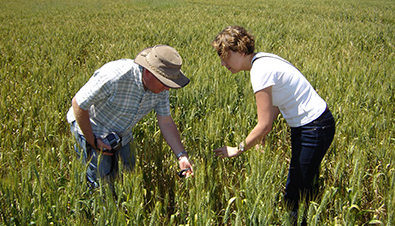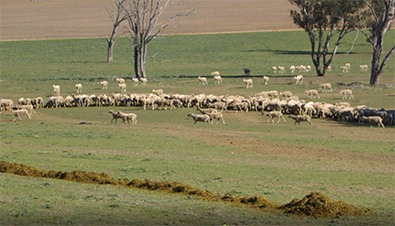Read the latest information on
Foot-and-mouth disease

Rigorous and regular surveillance will protect your growing crops from new weeds, pests and diseases.
As this year’s winter crop reaches a critical growth stage, it’s time to do rigorous and regular surveillance to protect your growing crops from new weeds, pests and diseases.
Grains biosecurity officer, Jim Moran, said that surveillance throughout the life of a crop will provide the best possible chance of identifying new weeds, pests and diseases early – just after symptoms appear – and will significantly increase the possibility of being able to eradicate the pest, and minimise crop damage and loss of income.
“Whether it’s something new to Australia, or an established pest that’s new to your farm, there can be multiple impacts on productivity from weeds, pests and diseases without early interventions,” Jim said.
“If you have imported fodder, grain or stockfeed lately from other regions onto your property, you need to be particularly vigilant about surveillance for germinating plants, new insects and disease symptoms. Check the places where it was stored and fed to livestock, and in paddocks nearby.”

Check the places where fodder, grain or stockfeed was stored and fed to livestock.
“There are many ways unwanted, uncontrolled and unclean arrivals can spread problems for you.”
Weeds, pests and diseases arrive as seeds, eggs, spores and other microscopic particles. They are transported in and on soil, plant matter, machinery, work boots, vehicles, trucks, equipment and livestock.
“Once established, they can increase your cost of production through chemical applications, decrease yields through plant damage and delay, and may impact on the quality, price and marketability of your finished product, if you get one.”
A successful surveillance program is only possible if you have a thorough knowledge of the common pests of the crop(s) you are growing.
“Whether it’s you, a family member or your agronomist who does the surveillance, knowing what’s normal to expect in your crop, will help to identify, through elimination, any unusual weeds, pests and diseases.”
There are numerous sources of excellent information on both common and exotic grain pests and diseases which support surveillance activity. (See Links below.)
Information is found in booklets, ute guides, fact sheets, web sites, social media forums, various crop disease apps for mobile devices, and grower group publications such as e-newsletters.
Key points:
For more information on biosecurity or the Grains Farm Biosecurity Program visit planthealthaustralia.com.au/gfbp
Download manuals and sign templates